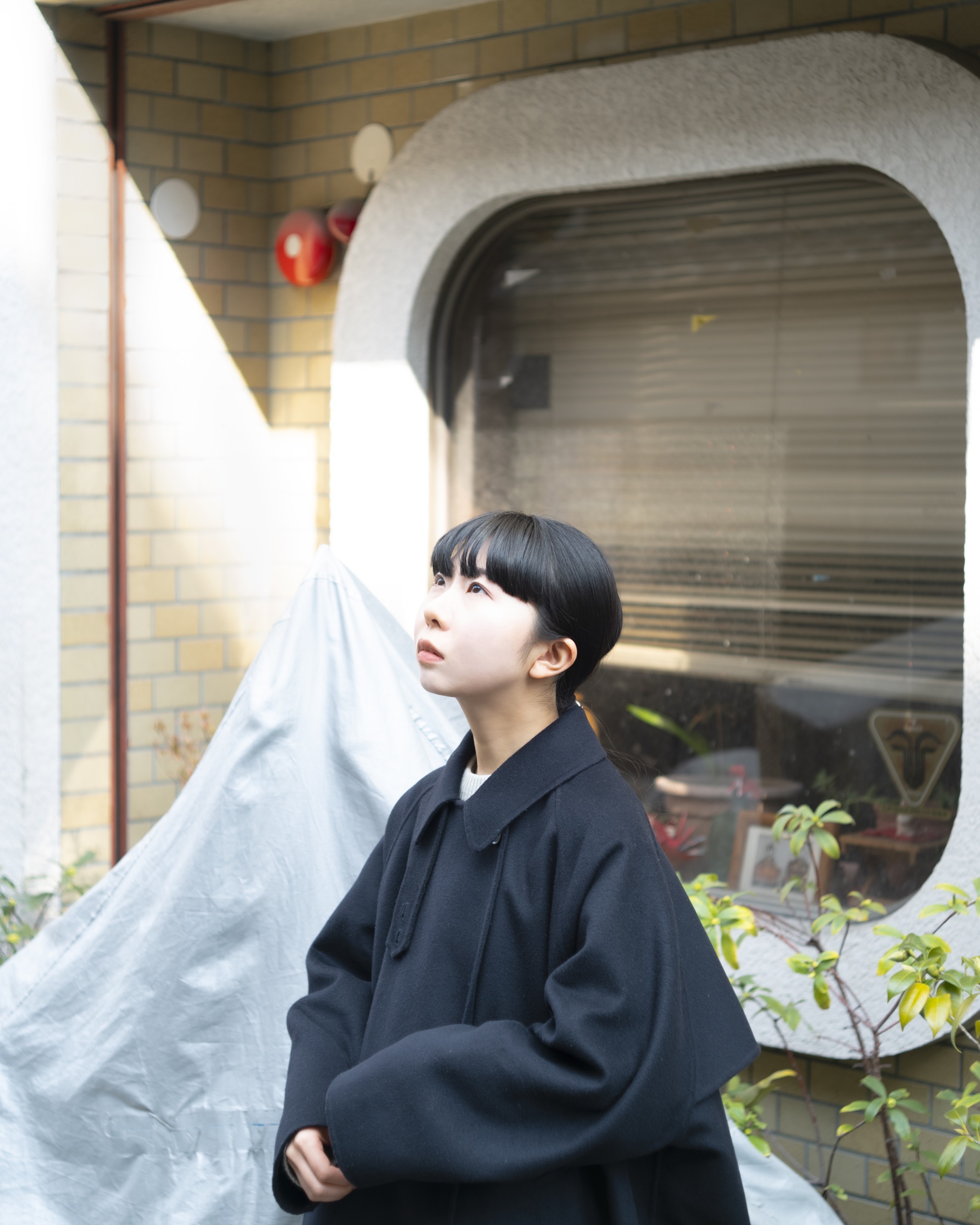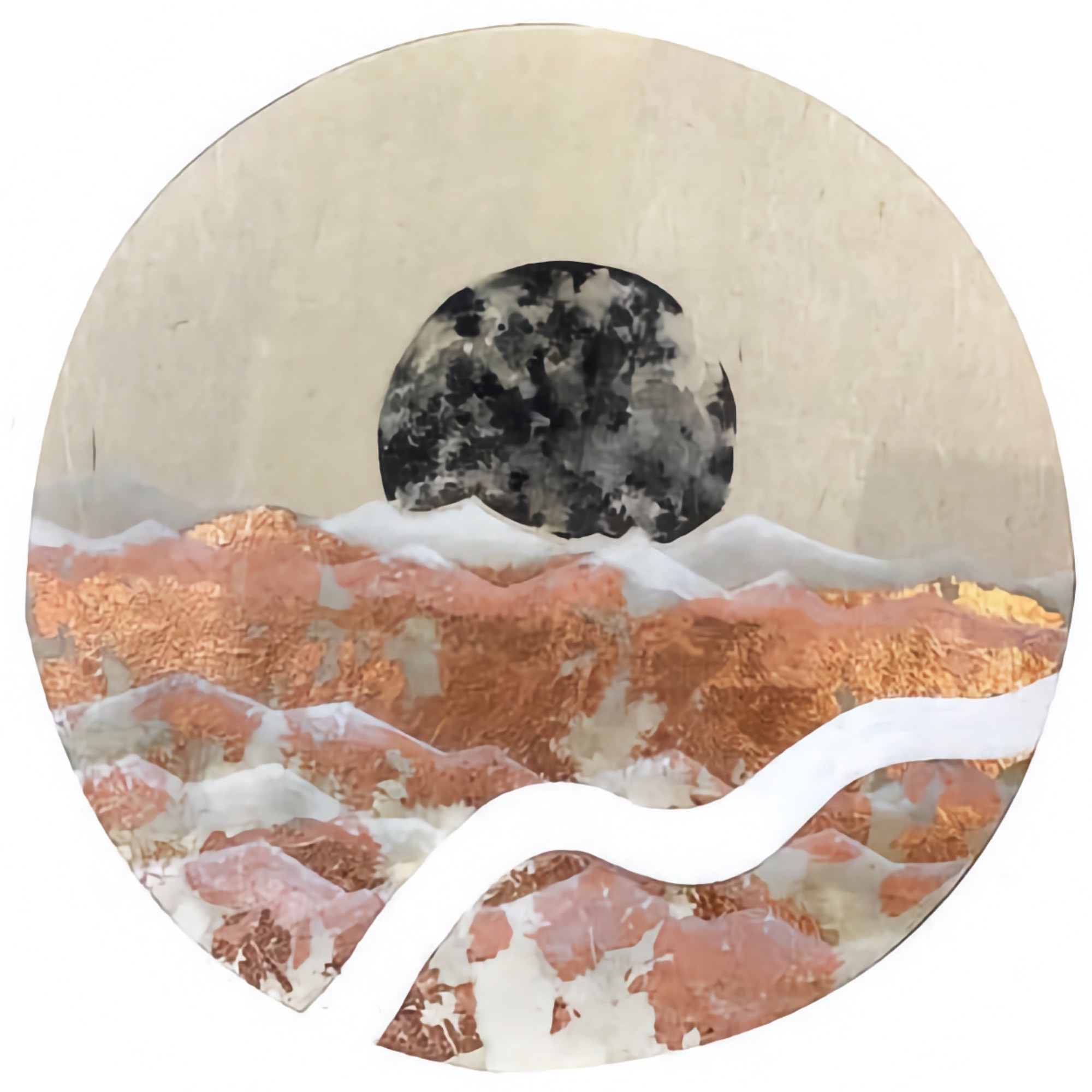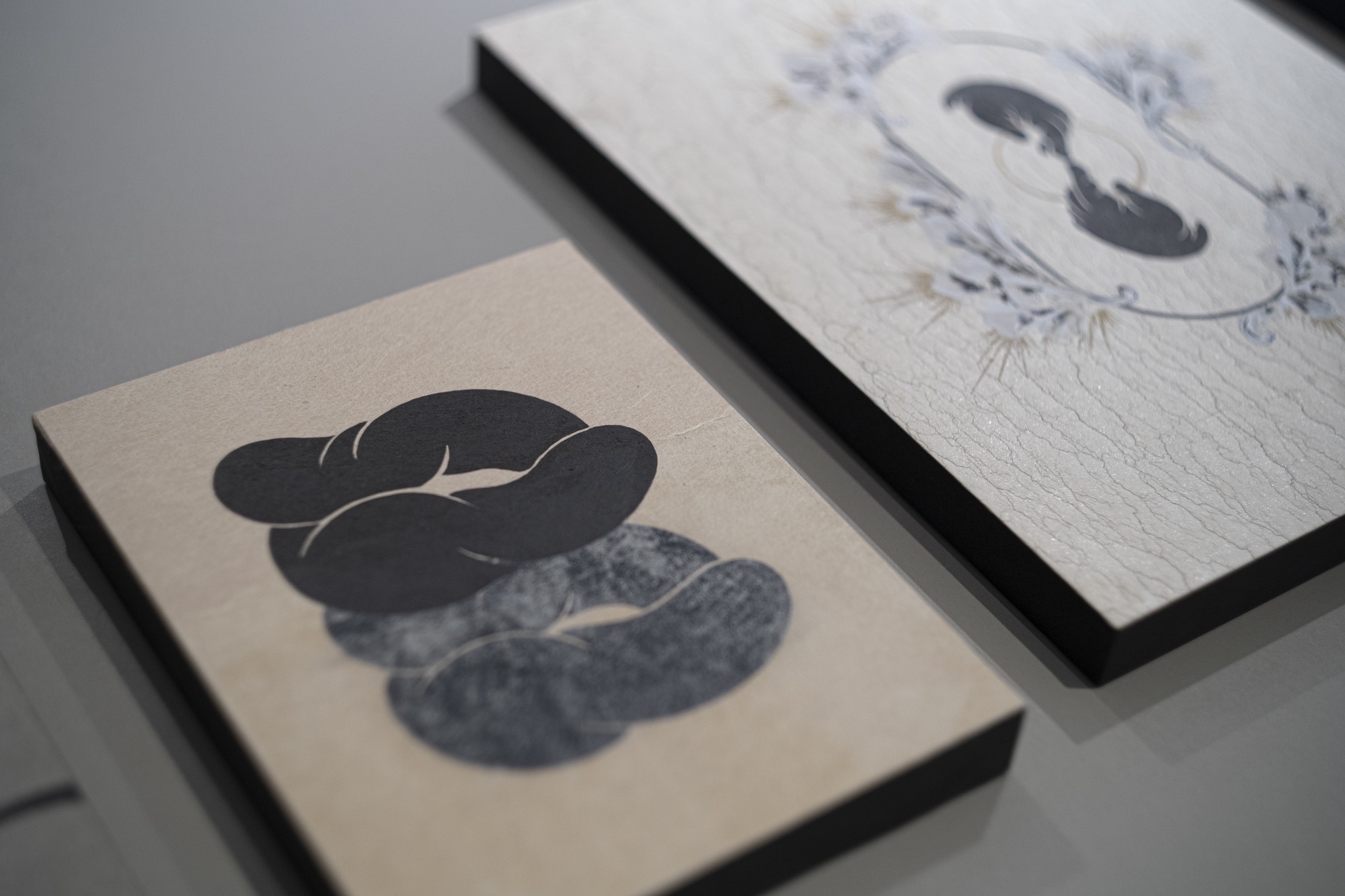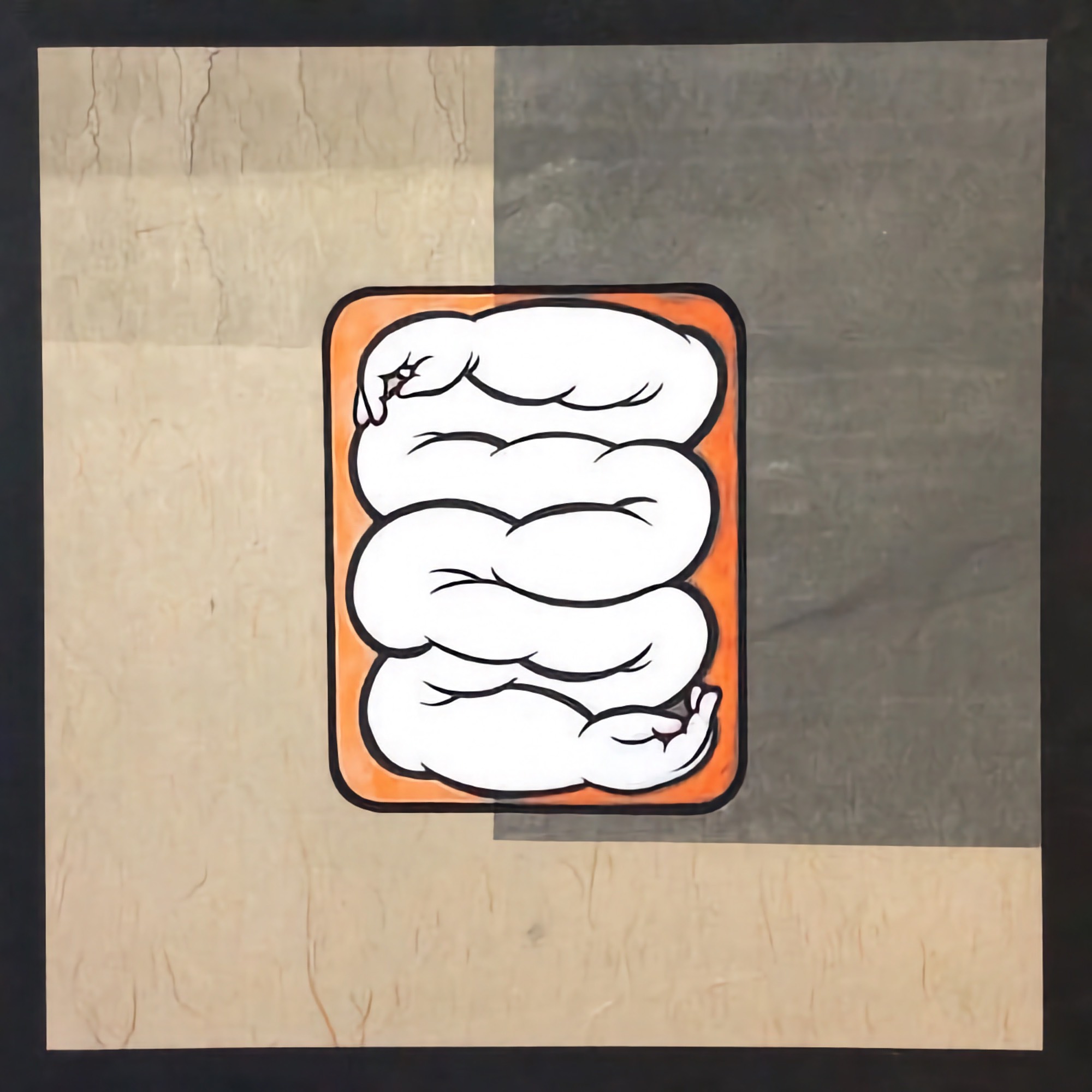
 “surface”
“surface”
Since I was a child I have loved drawing.
I often went to the hospital because I was born with bad legs.
And there was a long waiting time so I always waited for the time while drawing pictures in a sketchbook.
Actually I wasn't very good at studying or exercising, so the only thing I was praised for was drawing.
So when I found out about art colleges, I thought, “What a dream school! I definitely want to go.”
In my third year at university, I chose a course in folding screens art, and that was when I became fascinated with Japanese-style painting.
I studied materials for Japanese paper and ink and I also made hanging scrolls and folding screens. It was so interesting for me and those techniques are used in my current artworks.
 Kanako’s Works
Kanako’s Works
The theme of my work is “connection with others” and “our emotions”. I started working on this theme after my grandmother suffered a stroke that left her limbs disabled.
She was a very sociable person and originally worked as a dressmaker.
She had many friends, held workshops, and taught at a vocational school.
But when she lost the use of her limbs, the way of her communication was changed completely in a bad way.
I was quite shocked because I also had some of those experiences in my childhood and I began to think deeply about the relationship between “limbs” and “communication.”
That’s why I always use hands and feet as motifs of my artworks.
 She is particular about the texture, form and design of the motifs.
She is particular about the texture, form and design of the motifs.
I’m particular about the texture of arms and legs and the chubby, plump curves are completely to my liking. Those textures depicted in Shunga and Ukiyoe are unnecessarily chubby.
Maybe I’m influenced by such expressions.
I also use washi (Japanese paper) because I think it’s like human skin.
So I am particular about choosing washi that has not been bleached, but dyed with plants and trees.
By drawing on washi with sumi ink and then pasting washi and drawing on it again, I can create shades of color and it gives a sense of the thinness and materiality of washi.
Artist’s Collection